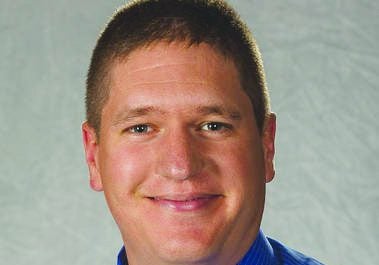Davis: Management practices to minimize fruit tree diseases
Published 9:19 am Wednesday, May 1, 2019

- David Davis, Clark County Cooperative Extension Agent for Agriculture and Natural Resources, College of Agriculture, University of Kentucky
Between the middle of May and August, we will receive phone calls, diseased branches, leaves and questions related to many fruit tree disease problems.
Some of the most common samples that we get include rusted leaves of apples, fruit rots of various fruits, diseased branches and more. The worst part is diagnosis is most often grim for those who bring these samples into our office!
Often little can be done to remedy the situation when disease symptoms appear. Many diseases on fruit trees have to be “prevented” instead of “cured.”
Fruit trees are relatively expensive to purchase, and take time to get established. It takes at least three years and sometimes four depending upon the type of fruit tree before a decent harvest is even possible.
Many times, home orchards fail because of disease or other production issues. Diseases are the primary concern and should be taken seriously throughout the year since it takes much time and expense to get fruit trees started in the home orchard.
Minimizing disease issues in fruit trees starts with good pruning practices and keeping home orchards “clean.”
Pruned limbs should be collected and burned outside of the orchard. Diseased, mummified fruit left on the trees from last year should be carefully removed from the tree and discarded far away from the orchard. Remove diseased and damaged limbs from a tree at pruning time.
We have had a minimal opportunity this year because of the rainy weather for applying dormant fungicide application and “dormant oil” to our fruit trees. In most years, these are good practices to implement.
The last option for managing diseases preventively in the home orchard, but often the first to be considered by the homeowner, is applying fungicides.
Fungicides should be applied before tree exposure to our most common fungal diseases in fruit trees to be effective. Many people who contact us are looking for the “silver bullet” recommendation of what to spray to treat a particular disease that shows up.
Unfortunately, it is often too late to treat a diseased fruit tree once symptoms show themselves conclusively. It also usually takes multiple applications at regular intervals, not just one spray application, for fungicide applications to work.
Usually, an application of fungicide should be made once every seven to 10 days to work appropriately. Now is the time to be making regular preventive fungicide applications.
We have backyard spray guides available at the Clark County Extension Office to help determine when to apply fungicides, and what fungicides to apply to your fruit trees. We have guides for peaches, plums, and other stone fruit, as well as apples and pears.
To learn more about minimizing disease in your home orchard or to obtain spray guides, feel free to visit us or call 859-744-4682. You can also get these spray guides by contacting me by email (david.davis@uky.edu).
David Davis is a Clark County Cooperative Extension Agent for Agriculture & Natural Resources.





